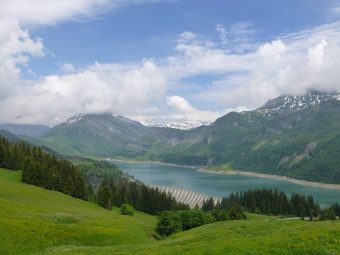
The Commission welcomes the provisional agreement just reached between the European Parliament and the Council on the Nature Restoration Law. Once adopted and applied in the EU Member States, the law will be a key contribution to reaching climate neutrality by 2050 and increasing Europe’s preparedness and resilience to the effects of climate change.
The law should set in motion a process for continuous and sustained recovery of nature across the EU’s land and sea. As an overall target to be reached on EU level, Member States will put in place restoration measures in at least 20 percent of the EU’s land areas and 20 percent of its seas by 2030. By 2050 such measures should be in place for all ecosystems that need restoration.
The law will help the EU and its Member States meet the restoration target they committed to under the Kunming-Montréal Global Biodiversity Framework at the biodiversity COP15 in December 2022.
More:
- THREE CONDITIONS THAT WILL HELP SCALE BLENDED FINANCE FOR NATURE-POSITIVE OUTCOMES
- 2023 CHAMPIONS OF THE EARTH AWARD TO CELEBRATE PIONEERING EFFORTS TO END PLASTIC POLLUTION
- SAUDI ARABIA TO HOST WORLD ENVIRONMENT DAY 2024 WITH A FOCUS ON LAND RESTORATION, DESERTIFICATION, AND DROUGHT RESILIENCE
National action to make ecosystems healthy and productive
Different restoration targets will apply to different ecosystems, and Member States will decide the specific measures that will apply on their territories. For this purpose, they will develop national restoration plans, with restoration needs and measures adapted to the local context and a timeline for their implementation. They will develop these plans involving local communities and civil society.
The plans should seek synergies with climate change mitigation, climate change adaptation and disaster prevention, as well as with agriculture and forestry.
Specific objectives for various ecosystems will cover for example improving the state of the EU’s key land and marine habitats, urban ecosystems, rivers and floodplains, or improving pollinator diversity.
Next steps
The European Parliament and the Council will now formally have to adopt the new Regulation. Once this is done, it will enter into force 20 days after its publication in the Official Journal of the EU. Member States will then need to submit their first nature restoration plan to the Commission within two years of the entry into force.
Background
The economic cost of the degradation of nature is very high, while every euro spent on restoration can deliver a return on investment of more than eight euros, depending on the ecosystem. Only healthy and productive ecosystems can provide the many services we all depend on, including resilience to natural disasters such as droughts and floods as well as long-term food security.
Despite EU and international efforts, biodiversity loss and the degradation of ecosystems continue at an alarming rate, harming people, the economy, nature and the climate. Today, over 80 percent of conservation status assessments for European habitat types are in poor or bad status with many further deteriorating. Past efforts to protect and preserve nature have not been able to reverse this worrying trend. Research such as the European Environment Agency’s 2018 State of Nature in the EU report or the work of the Intergovernmental Science-Policy Platform on Biodiversity and Ecosystem Services (IPBES) shows that European ecosystems are under increasing pressure especially from land use and land use changes and suffer from climate change and other threats such as nutrient pollution due to overuse of fertilizers and chemical inputs.
The Commission adopted the proposal for a Nature Restoration Law on 22 June 2022. The law is a key element of the European Green Deal and the EU Biodiversity strategy and builds on existing legislation.
Source: European Commission



